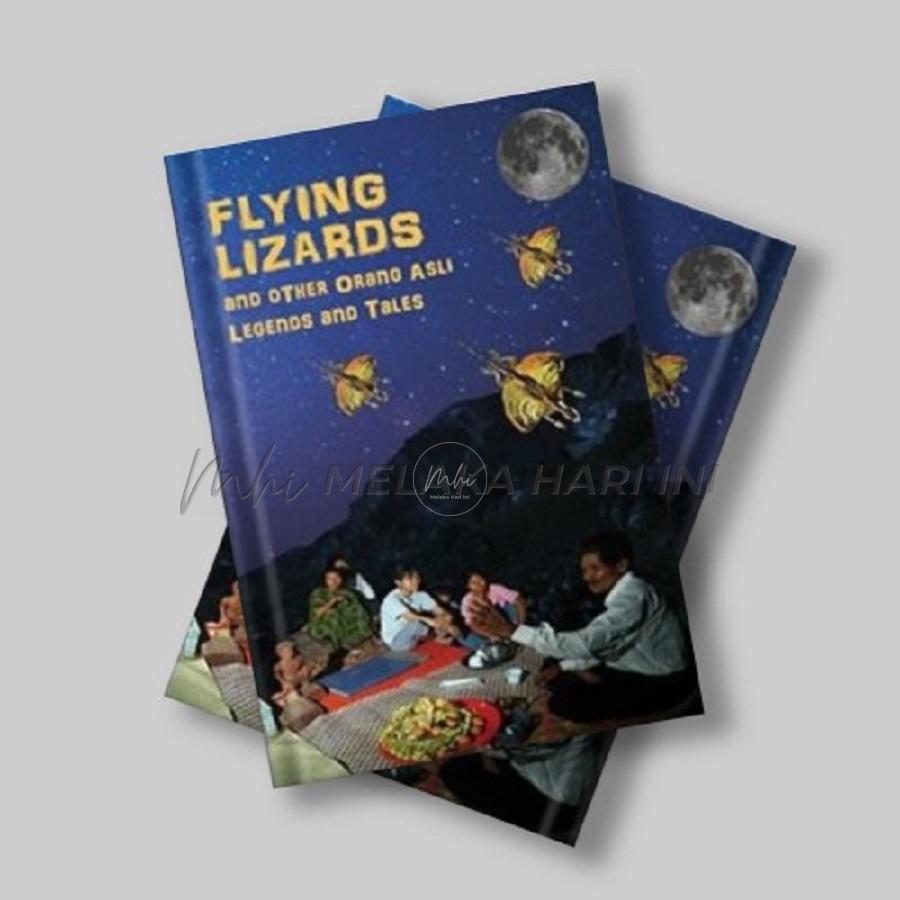
Flying Lizards, Tigers and Moyang: Aslian Tales
Stories sustain societies. There is a galaxy of such rich narratives transcending cultures. Take the example of flying lizards. The Orang Laut believe that flying lizards of the Peninsula look out for births, and caused young newly-arrived souls to enter into the bodies of newly-born children. In this way, they obtain possession of their future embodiments. They regard the flying lizards as subordinates to the great blind Flying Lizard in their grand narrative.
No Orang Laut will kill the small reptiles, since its companions would be sure to avenge its death, by refraining from pointing out the next born child of the offender to the soul which had been appointed to it. Moreover, the lizards have the power of turning themselves into crocodiles at will. The crocodile and the shark are regarded as brothers, and whenever a flying lizard learns that a soul is soiled and buried, the person concerned is “ordered” to death. This is done either through its own shape or in that of a snake (whose form it can assume at will when on land), or in that of a crocodile (when it is in the water), or through any other agent whatsoever.
Hence, whenever an Orang Laut dies of a snake bite or is seized by a crocodile or shark (the most probable forms of death according to their manner of living), or sucked down and drowned through some invisible agency, the Orang Laut all agree that it was the doing of the small flying lizard acting under the orders of the big blind lizard which watches over life and soul. This story was extracted from Walter William Skeat and Charles Otto Blagden (1906) Pagan Races of the Malay Peninsula.
I found these and other stories reproduced and assembled in Flying Lizards and Other Orang Asli Legends and Tales published in 2018 by the Centre for Orang Asli Concerns. Flying lizards, stories of origins and creation of human life, souls, end of the world, shamans, siamang, moyang, tigers and elephants manifest a vast collection of oral traditions. There are also stories on The Hantu Jin, the naga, and also the origins of places such as Jelebu and Tasek Bera; as well as the origins of sultan, penghulu, batin and rajas.
The narratives and symbolism reproduced, described as “legends and myths” by editor Colin Nicholas, were recorded from the Orang Asli, and “as such they rightfully belong to the Orang Asli.” We moderns tend to segregate their existence from ours in terms of our notions of the past. Legends and myths, as we see them from our lens, should not regarded as fairy tales. A modern narrative may also be regarded as such.
The Preface appropriates a history to the Orang Asli, and the lore of the people. These range from the Jahai to the north of the peninsula to the Jakun in the south. The Orang Asli carries their environment in their psyche. It is a cosmology in itself. The Semai for example have their own calendar system, encompassing a new year, like other peoples in the world. I gathered this during my stint at a university in Seri Iskandar, Perak. This was from the Semai settlement in Suak Padi, Bota, Perak, some 34 km west of Ipoh. No, the orang Asli is not lost in modernity. They are aware of their location in creation, and familiar with ideas about how the world works.
Knowing their place in the cosmos explains for example, how Orang Asli groups deal with tigers in different ways. This is especially noticeable in stories about tiger spirits. Northern Orang Asli groups would tend to connect shamanistic powers with powerful spirits of tigers. Some southern groups tell of transformation of individuals into tigers. And those involved are not necessarily shamans. One of the most powerful connections is the belief on the “tiger-man.” Related by Skeat (1902), there was the Semang man who had the reputation of being a notorious tiger-man, known as B’lian, and gave some interesting information about the performance (to be a tiger).
“You go,” the Semang man said, “a long way into the jungle…and there, when you are quite alone, you squat down upon your hunches, burn incense, and making a trumpet of your hand blow some of the smoke of the incense through it, at the level of your face, in three directions. You then repeat this process, holding your hand close to the ground; all you now have to say is ‘Yē chöp’ (I am going abroad), and presently your skin will change, the stripes will appear, your tail will fall down, and you will become a tiger. When you wish to return, say ‘Yē wet’ (I am going home), and you will presently return to your natural form.”
Then there is the story of the shaman-tigers (extracted from Endicott, 1979). This is from the Batek. They believe that some shamans have tiger-bodies that they can use in the forest. The Batek notion of the shaman-tiger, in which the shadow-soul of a living shaman enters and controls a tiger-form body, is quite distinct from the Malay concept of the were-tiger, believed to be so especially among the Kerichis. The Batek shaman has two bodies at once The Batek say that if there were no shaman-tigers to protect them, they would be molested by ordinary tigers.
Tiger stories are also related to the moyang (ancestor). There are the Moyang Pongkol, Moyang Tampamng Keladik and Moyang Sawai. The Moyang Pongkol for example can change their form. In one episode, as related by Wazir Jahan (1981) the moyang changed its form into that of the a child’s parent, upon hearing the child’s cries. The child, thinking that his parents were back ceased to cry and went to sleep. That night, the moyang pongkol became a tiger (again). It attacked the sleeping child and ate it.
The child’s brother, upon seeing what happened, ran and told the villagers what he saw. The villagers than prepered the leaves of moyang bantut and terong duri’ and uttered the following curse on the tiger: “If a tiger, be a tiger; if a man, be a man; but do not be both” Since then, the tiger has never been able to change its form…into that of a human and shuns human contact.
The lore guides and configures upon how the Orang Asli lives in their environment. Destroy the lore, and we destroy the law. Stories, more than “facts” and legal mechanisms are the lore/law sustaining all societies.
#####
Next week:
Resting place of an Idea: The Power of Sunan Kalijaga
Langgani saluran Telegram kami untuk dapatkan berita-berita yang terkini.


